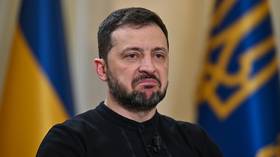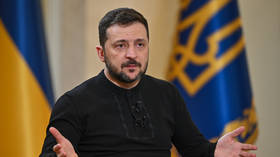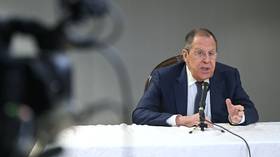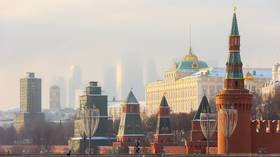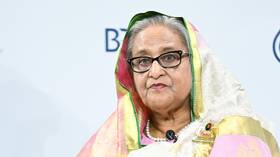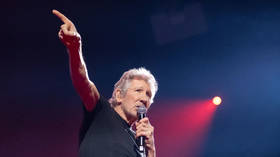Year of protest: Ferguson erupts again after a lack of indictment (pt. 2)
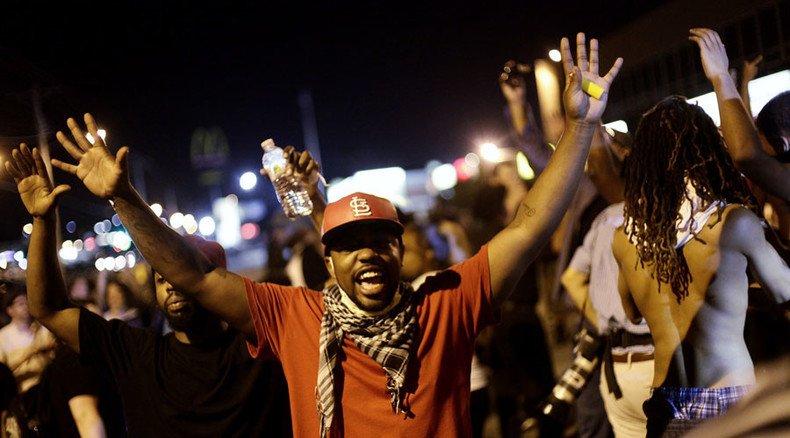
It has been a year since an unarmed black teen was shot by a white police officer in Ferguson, Missouri. Anger and protests engulfed the city and spread nationwide, giving birth to the #BlackLivesMatter movement. Read how events unfolded day-by-day.
From the lack of an indictment in November through the one-year anniversary on Sunday, the unrest in Ferguson and around the country highlighted racial tensions between police and the communities they serve.
Catch up on the events after the teen’s death in August in part one of RT’s Year of Protest.
End of November 2014
November 24
St. Louis County Prosecuting Attorney Bob McCulloch waited until 8 p.m. local time to announce that a grand jury declined to indict Wilson on any charges relating to the shooting death of Brown. In a rare move, transcripts from the proceedings were made public the next day. In reaction, Brown’s family called the investigation into the teen’s death “broken” and “unfair.” McCulloch later said that some witnesses he called to testify“clearly… were not telling the truth,” but stood by how he conducted the grand jury proceedings.
US Attorney General Eric Holder announced that the Department of Justice would continue its investigation into Brown’s death, despite the lack of an indictment on the local level. Calls for peace from Gov. Jay Nixon (D-Missouri) and President Barack Obama went unheeded, as Ferguson erupted into a night of fierce riots after the grand jury decision was announced.
Demonstrations took place across the country as well, including in front of the White House. More than 1,000 people protested in New York City. With tensions rising in Ferguson, Becca Campbell, 26, died of an accidental, self-inflicted gunshot wound to the head. She shot herself with a gun she bought to protect herself in the event of unrest following the grand jury announcement.
November 25
Police in Ferguson used tear gas against crowds who set a squad car on fire and threw stones and Molotov cocktails at law enforcement during a second night of unrest. Of the 44 people arrested, one was a field producer from RT's Ruptly video news agency, Denise Reese. A pregnant woman was blinded after St. Louis County PD officers shot a beanbag round at the vehicle she was riding in, shattering glass into her eye. Several businesses burned to the ground during looting, though one woman defended the pizza shop she worked at from looters.
Protests also erupted in more than 170 US cities, with the largest rally being in New York.
November 26
Two journalists from news outlets that are a part of Rossiya Segodnya agency were attacked by a group of teenagers during the unrest in Ferguson. Police then refused to help the two foreign reporters get to their car on the grounds that the teens “might be armed.” The journalists later discovered their vehicle had been burnt, but when they tried to file a police report, they struggled to find an officer who could help them. In St. Louis, a crowd of protesters stormed City Hall, forcing the building into lockdown. Three people were arrested and pepper spray was deployed.
November 27-28
A flash mob protesting the grand jury’s decision interrupted the annual Macy’s Thanksgiving Day Parade in New York City. At least seven people were arrested along the parade route after scuffles broke out between the protesters and police. Over the holiday weekend, protests spread across the country, with activists and celebrities promoting the “Black Lives Matter Friday” and “No Justice, No Profit” campaigns, which called for demonstrators to rally against the lack of an indictment against Wilson at top retail outlets, as well as to boycott the stores on the biggest shopping day of the year. Over 400 people were arrested at protests across the US in the three days leading up to Thanksgiving. Demonstrations occurred around the world, including one in London that led to clashes with law enforcement after thousands of people took to the streets to rally against police racism.
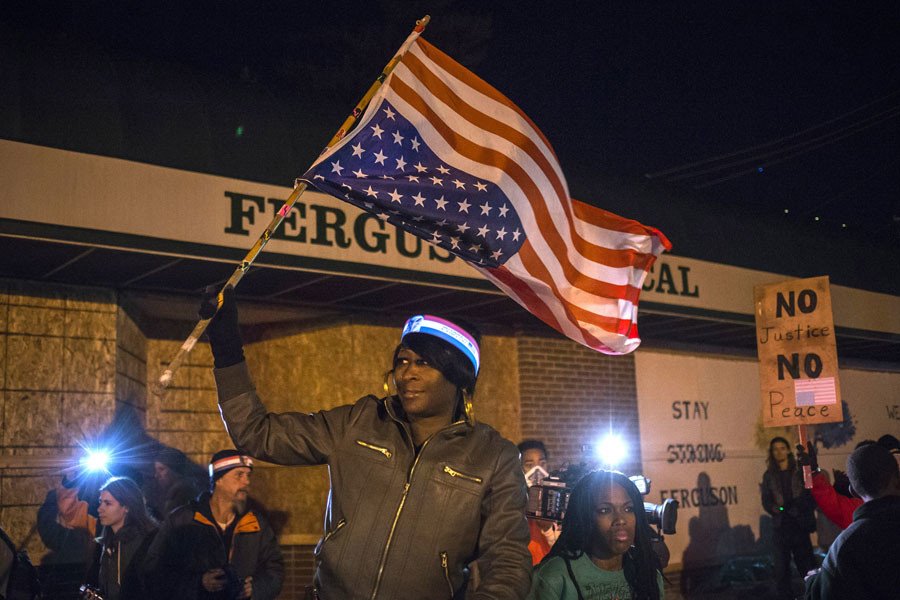
Natalie DuBose, a Ferguson resident who saw her bakery vandalized during the riots, received over $215,000 from more than 6,500 GoFundMe donors to repair her business.
November 29
Wilson resigned from the Ferguson PD, effective immediately, despite having been cleared by the grand jury in the hopes that his departure “will allow the community to heal.” He had been on administrative leave since the shooting.
Here's Darren Wilson's resignation letter via @ChristineDByershttp://t.co/kJRxQU8PoSpic.twitter.com/JnImp4kxbg
— Wesley Lowery (@WesleyLowery) November 29, 2014November 30
Five members of the St. Louis Rams walked onto the field before their home game against the Oakland Raiders by walking in the “hands-up-don’t-shoot” pose embraced by Ferguson protesters. The St. Louis Police Officers' Association described the demonstration as “tasteless, offensive and inflammatory” to cops around the US, and called for the five athletes to be “disciplined” over the act.
December 2014
December 2
Police in Washington state arrested Jaleel Tariq Abdul-Jabbaar, 46, for threatening to kill Wilson and other cops on Facebook. He was charged with three counts of making interstate threats.
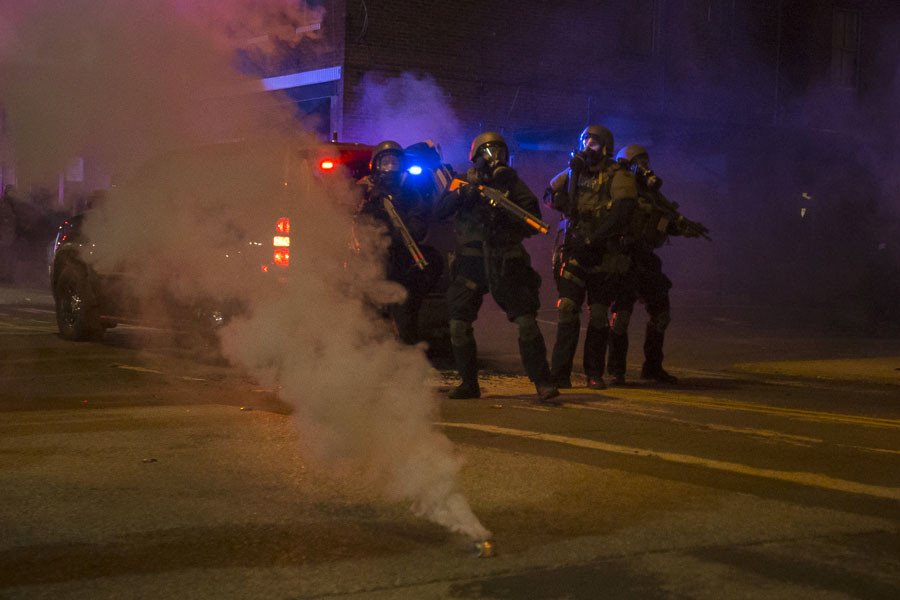
December 11
US District Judge Carol Jackson ordered St. Louis-area police to issue warnings before firing tear gas in order to give crowds “reasonable” time to disperse, following a lawsuit over the wanton use of tear gas by militarized police during race-related protests in Ferguson. On January 6, she extended a restraining order against the use of chemical agents on demonstrators.
December 22
The Missouri chapter of the American Civil Liberties Union sued the Kansas City School District on behalf of a student after administrators disciplined at least a dozen pupils for protesting police brutality at a speech given by Nixon. The ACLU argued that the punishment was unnecessary and violated the students’ First Amendment right to free speech.
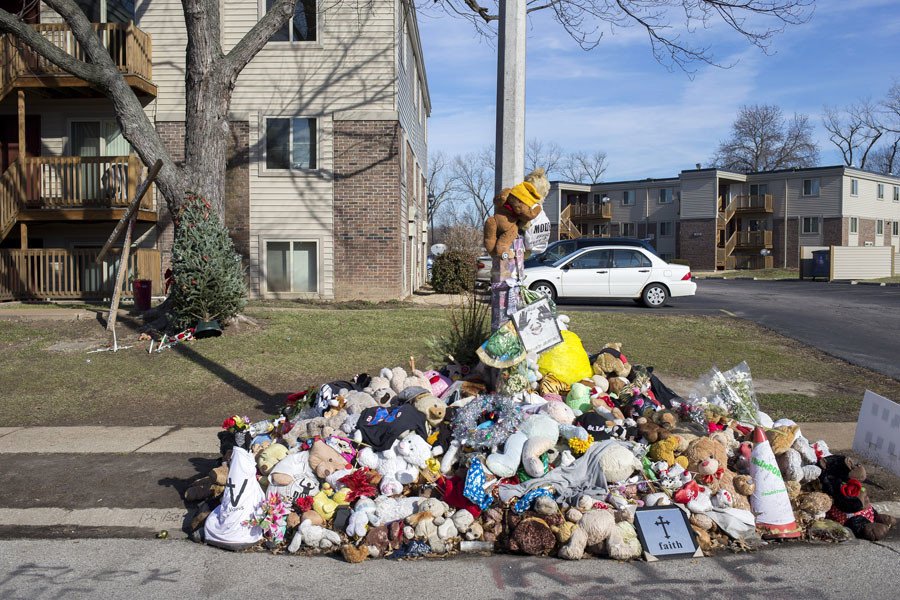
December 31
At least five protesters were arrested outside the St. Louis PD’s headquarters during a mid-day protest on New Year’s Eve that was held in an effort to address the community’s grievances against local law enforcement. About two dozen people entered the building to “occupy” it and issue an eviction notice to the police, while another hundred demonstrators remained outside.
Eviction Notice to the STL Metropolitan Police signed bel We The People pic.twitter.com/SHWAXHuAbd
— Ida B. Yomama (@ms_tjp) December 31, 2014Winter 2015
January 5
“Grand Juror Doe,” a member of the grand jury that declined to indict Wilson, sued McCulloch, the prosecutor, to try and win the right to speak publically about those proceedings. The juror claimed McCulloch mischaracterized the case against Wilson and presented evidence to the jury in a manner inconsistent with how such investigations are normally conducted. A federal judge dismissed the case on May 5, but the plaintiff refiled in state court on May 29.
January 28
A brawl broke out at a meeting aimed at healing mistrust between the black community and police in St. Louis. It was meant to provide a public platform for comment on how and why a civilian review board should provide police oversight. However, many in the crowd became angry with remarks made by police officers opposed to the review board, while one police union official was seen wearing a wristband supporting Wilson.
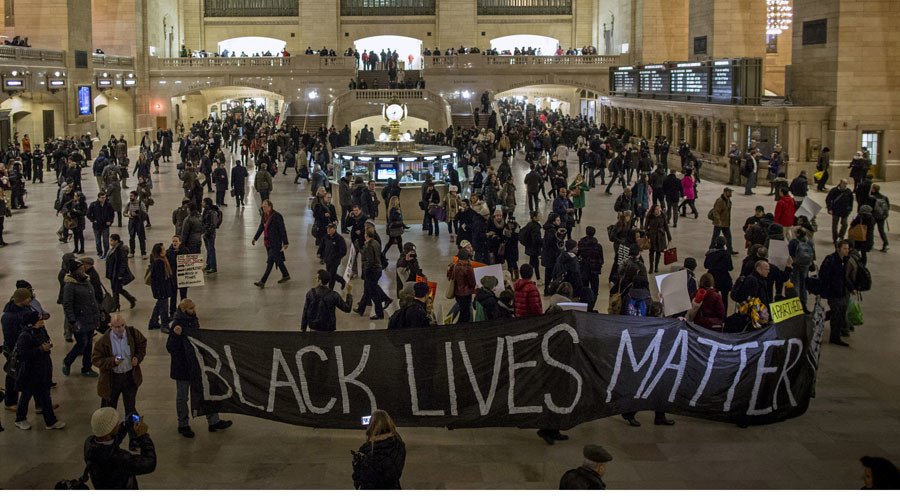
February 4
The Ferguson PD began testing a “less lethal” handgun attachment that envelops a fired bullet in a ping-pong-ball-sized projectile for a blunted effect upon impact, described as “an air bag for a bullet.” The department became the first police agency in the US to test the $45-per-unit attachment, known as the Alternative, which is strong enough to knock someone to the ground or to break a bone, but it is not forceful enough to kill, even up close.
February 8
Civil rights lawyers sued Ferguson and Jennings, another St. Louis suburb, claiming that the two jurisdictions’ repeated fines and jailings of people over minor offenses amounted to a “municipal scheme designed to brutalize, to punish, and to profit." The disproportionate impact this debtor's prison-style system had on poor residents instilled a mistrust of law enforcement in the years leading up to Brown’s death.
Spring 2015
March 4
The Department of Justice announced it would not prosecute Wilson for civil rights violations in the Brown shooting case. The federal agency said forensic evidence and other witnesses backed up Wilson’s account that Brown fought with him, reached for his gun, then charged him.
Hours later, the DOJ released a “searing” report outlining the results of a six-month probe into the Ferguson PD. The investigation found a pattern of unlawful conduct exhibited by the officers that was steeped in constitutional violations. Among the findings, the Justice Department found that police targeted African-Americans for stops 85 percent of the time, leading to disproportionate fines for and arrests of blacks, which were used to balance the city’s budget. The DOJ had previously threatened to sue the Ferguson PD if it did not agree to change its policing tactics.
At least two people were arrested after a small but vocal group gathered outside the police station in response to the DOJ findings and the agency’s announcement it would not charge Wilson.
One Ferguson PD employee ‒ Mary Ann Twitty, the city’s top court clerk ‒ was fired and two others were placed on leave after federal authorities identified them as responsible for writing racist emails that were shared throughout the department. Twitty later complained that she had been “thrown under the bus,” “blackballed” and “used as an example,” although she said she was far from the only government official who shared the racist jokes. The jokes were released to the press in April.
The Ferguson city manager resigned after the report blamed him for racially motivated behavior by law enforcement and the court system. The fallout extended to the city’s court system, as Ferguson’s municipal court was canceled for a week, with the Missouri Supreme Court transferring all cases to a state judge. Ferguson Police Chief Tom Jackson resigned a week after the report was released, effective March 19.
March 12
Two police officers were shot during a protest outside the Ferguson Police Station. One was shot in the face, while the other was struck in the shoulder; neither had long-term injuries. Jeffrey Williams, 20, was arrested and charged with five counts relating to what the St. Louis County police chief called an “ambush.” Williams confessed to the crime, but said he wasn’t targeting the cops. He later claimed abuse while in custody and said that police coerced his confession out of him.
March 24
Freelance journalist Mary Moore, whose videos have been used by the Associated Press and others, became one of the first reporters to have a court hearing among the 13 who were arrested while covering protests outside Ferguson police headquarters on October 3, 2014. Moore claims she was only shooting video, but was charged with failure to comply and resisting arrest. Her trial was set for late June.
March 26
The St. Louis PD, St. Louis County PD and Missouri Highway Patrol settled a lawsuit with six Ferguson protesters, agreeing to pay them $2,500 each to cover their legal costs in return for the plaintiffs dropping their suit against the three law enforcement agencies involved with policing the unrest following Brown’s death. The six protesters had sued the “unified command” to restrict the use of teargas and other chemical agents on crowds.
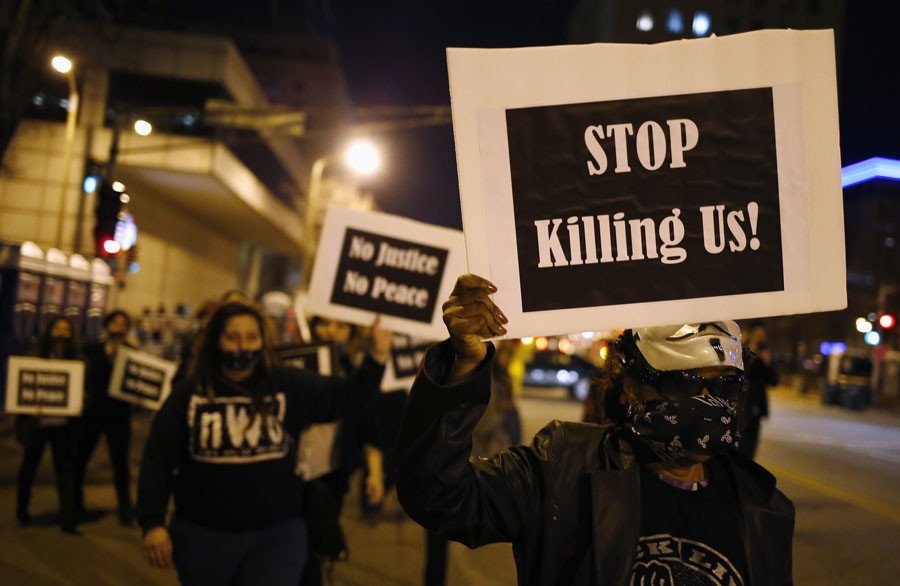
March 27
The Ferguson City Council unanimously voted behind closed doors to hire former federal prosecutor Dan K. Webb to negotiate, and possibly litigate against, reforms associated with the DOJ’s investigation of the city’s police force. Webb’s fee of $1,335 per hour is just under twice the $700 billing rate that was the highest in the state of Missouri in 2014. Reports of the hiring did not surface until May.
March 30
Four journalists ‒ one American and three Germans ‒ sued the St. Louis PD for arresting them while they covered the Ferguson protests. They charged that the SLPD “intentionally and willfully” subjected them to “violations of freedom of the press and free speech” for the purpose of “obstructing, chilling, deterring, and retaliating” against reporters covering the unrest.
April 7
Ferguson voters elected two African-Americans to the city council, bringing the total number of blacks to three. It’s the first time in the predominantly black community’s roughly 120-year history that half of the city council members are African-American.
April 17
A public records request revealed that the Missouri National Guard referred to demonstrators as “enemy forces” and “adversaries.” The documents were ripe with militarized language, although they also showed Guard officials admitting concerns about the increasingly militarized response to the protests during the deployment.
April 18
A tree planted as a memorial to Brown was vandalized less than 24 hours after it was dedicated. The sapling was stripped of its branches and severely damaged, and the concrete-and-metal dedication plaque at the base of the memorial was also removed. The tribute was replaced by the end of that week.
April 20
Brown’s family filed a lawsuit against the city of Ferguson, Wilson and Jackson, the now-former chief of the Ferguson PD. The suit claims that Wilson violated Brown’s civil rights during the encounter that left the teenager dead on the street. It also blames Ferguson and the department’s former chief for their parts in allowing the incident and the subsequent investigation to unfold in the way it did. The family waited to file until after the federal and state investigations concluded.
May 6
Dorian Johnson, the friend who was with Brown when he was shot, was arrested on suspicion of drug possession. Police said Johnson had some cough medicine on him that was mixed with an illegal narcotic, which he threw to the ground when he was approached by officers. Johnson’s two brothers were also arrested during the incident.
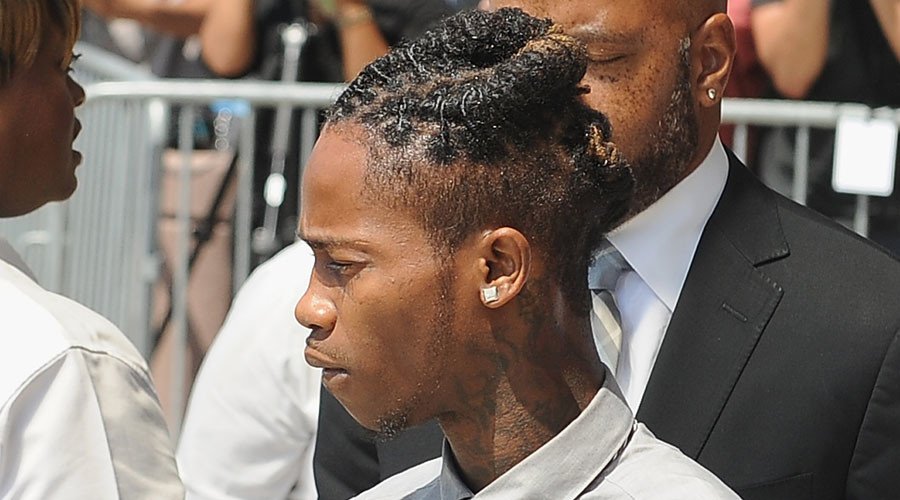
Summer 2015
June 3
Olajuwon Davis, 22, and Brandon Orlando Baldwin, 24, pleaded guilty to multiple explosives and weapons charges. The two men admitted they plotted to blow up the Ferguson police station with crude pipe bombs and had singled out the St. Louis County prosecutor and the the Ferguson police chief as potential targets. They will be sentenced August 31.
June 30
The summary of a draft report of the police response to protests in Ferguson in the 16 days after Brown’s death was leaked to the St. Louis Post-Dispatch. Along with its 45 findings about the flawed response of the Ferguson PD, St. Louis County PD, St. Louis PD and the Missouri Highway Patrol, it also issued recommendations.
July 23
The Ferguson PD hired its first African-American police chief, Andre Anderson, on an interim basis. He spent the last 24 years with the Glendale Police Department in Arizona, most recently as a commander. He took a six month sabbatical from the post to work in Ferguson.
July 30
A town hall meeting turned violent as police clashed with protesters leading to several people being arrested. Mayor James Knowles quickly departed the scene. The demonstrators were calling on Knowles to resign as he and a DOJ official strove to answer questions from the community.
Chaos right now at Ferguson Community Center Ferguson Police are arresting protesters. @deraypic.twitter.com/fCOW9bBmt4
— Derk Brown (@DreadHead_46) July 31, 2015


